Complete Solutions to INTERNAL ENERGY of chapter COMPETITION CARE UNIT of Class 11 book with complete answers and questions
| Class 11 | PHYSICS |
| Chapter | COMPETITION CARE UNIT |
| S CHAND | INTERNAL ENERGY |
| Number Of Questions | 40 |
| Academic Year | 2023-24 |
The internal energy U is a unique function of any state because change in U
View SolutionAssertion Internal energy of an ideal gas does not depend on voume of gas
Reason Internal energy depends only on temperature of gas
View SolutionAn ideal non-atomic gas is taken round the cycle ABCDA in the P-V diagram where the coordinates of the points are :

View SolutionA given system undergoes a change in which up workdone by the system equal the decrease in its internal energy. The system must have undergone an
View SolutionThe first law of thermodynamic is a special case of
View SolutionChoose the correct option:
In following figs. Variation of volume by change of pressure is shown in Fig. A gas is taken along the path

View SolutionAn ideal gas is taken around the cycle ABCA as shown in P-V diagram. The net work done during the cycle is equal to :
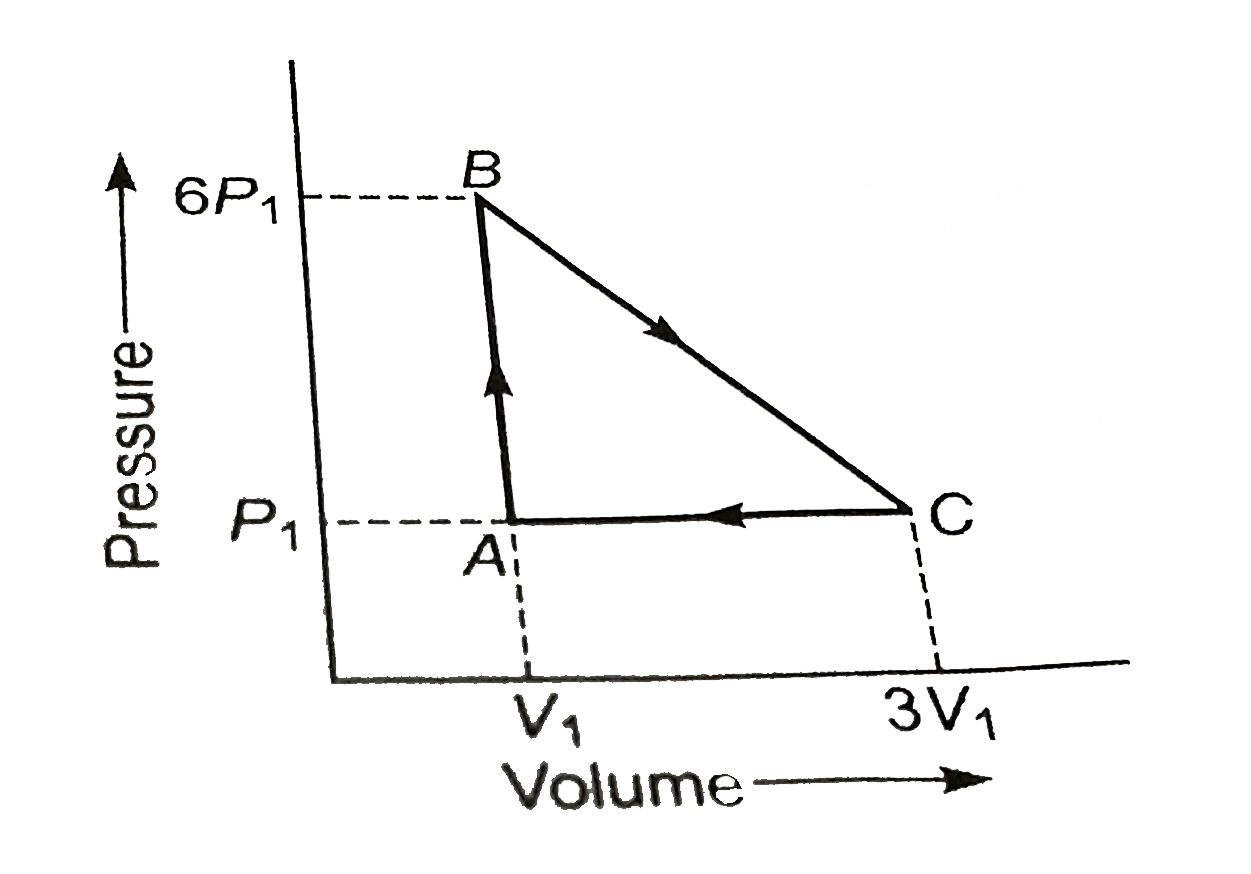
View SolutionWhich of the following is not a thermodynamic coordinate ?
View SolutionHeat energy absorbed by a system is going through a cyclic process shown is Fig. 15.9.3.
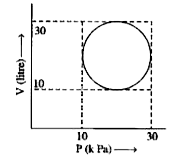
View SolutionDuring an adiabatic expansion of 2 moles of a gas the chang in internal energy was found to be equal to -100 J. The work done during the process will be equal to
View SolutionA monatomic gas on n molecules is heated from temperature
View SolutionA Carnot engine operates with a source at 500 K and sink at 375 K. Engine consumes 600 kcal of heat per cycle. The heat rejected to sink per cycle is
View SolutionIf R is universal gas constant , the amount of heat needed to raise the temperature of 2 moles of an ideal monatomic gas from 273 K to 373 K when no work id done is
View SolutionA frictionless heat engine can be 100% efficient only if its exhaust temperature is
View SolutionThe temperateus of inside and outside of a refrigerator are 273 K and 303 K respectively. Assuming that the refrigerator cycle is reversible, for every joule of workdone, the heat delivered to the surrounding will be nearly
View SolutionAn ideal gas heat engine operates in Carnot cycle between
View Solution1
View SolutionIf a refrigerator's door is kept open, will the room become cool or hot ?
View SolutionA Carnot engine has an efficiency of
View SolutionWhen an ideal diatomic gas is heated at constant pressure the fraction of the heat energy supplied which increases the internal energy of the gas is
View SolutionA gas mixture coinsists of (2) moles of oxygen and (4) moles of argon at temperature (T). Neglecting all vibrational modes, the total internal energy of the system is (jee 1999)
(a) 4 RT (b) 15 RT ( c) 9 RT (d) 11 RT.
View SolutionWhen an ideal diatomic gas is heated at constant pressure the fraction of the heat energy supplied which increases the internal energy of the gas is
View SolutionAn ideal gas is taken through cycle
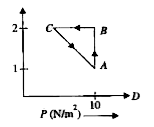
View SolutionIn a given process on an ideal gas, dW = 0 and
View SolutionWhen a gas expands adiabatically
View SolutionThe specific heat of a gas in an isothermal process is
View SolutionWhen the system does not exchange heat with the surroundings, the process is
View SolutionA diatomic gas initially at
View SolutionFor a gas
View SolutionThe pressure inside a tyre is 4 times that of atmosphere. If the tyre bursts suddenly at temperature. 300 K. What will be the new temperature ?
View SolutionThe gas law (PV/T) = constant is true for
View SolutionTwo identical samples of a gas are allowed to expand (i) isothermally (ii) adiabatically. Work done is
View SolutionCertain perfect gas is found to obey
View SolutionTwo samples, A and B of a gas at the same initial temperature and pressure are compressed from volume V to V/2, A isothermally and B adiabatically. The final pressure of A will be
View SolutionA mass of ideal gas at pressure P is expanded isothermally to four times the originl volume and then slowly compressed adiabatically to its original volume. Assuming
View SolutionStarting from the same initial conditions, an ideal gas expands from volume
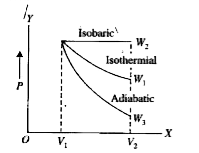
View SolutionA monatomic ideal gas, initially at temperature
View SolutionP-V plots for two gases during adiabatic processes are shown in Fig. 15.9.6. Plot 1 and 2 should correspond respectively to
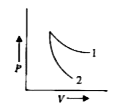
View SolutionIn an adiabatic change the pressure and temperature of monoatomic gas are related as
View SolutionSlope of PV and V for an isobaric process will be
View Solution
INTERNAL ENERGY questions and complete solutions for chapter COMPETITION CARE UNIT of S CHAND PHYSICS (ENGLISH) of Class 11
All Exercises from S CHAND Class 11 PHYSICS COMPETITION CARE UNIT
- Dynamics (PROJECTILE MOTION)
- Dynamics (UNIFORMLY ACCELERATED MOTION)
- Dynamics ( Laws of motion )
- Dynamics ( WORK POWER ENERGY )
- FRICTION
- GRAVITATION
- INTERNAL ENERGY
- MOTION IN FLUIDS
- NDA EXAM QUESTIONS
- OBJECTIVE QUESTIONS FROM PREVIOUS IAS EXAMINATIONS
- OSCILLATIONS
- PROPERTIES OF MATTER (CALORIMETRY, CHANGE OF STATE & KINETIC THEORY OF GASES )
- PROPERTIES OF MATTER (ELASTICITY )
- PROPERTIES OF MATTER (SURFACE TENSION )
- THERMAL CONDUCTION
- THERMAL RADIATION
- UNIFORM CIRCULAR MOTION
- UNIFORM CIRCULAR MOTION (ROTATIONAL MOTION AND MOMENT OF INERTIA )
- UNITS, DIMENSIONS
- VECTORS AND SCALARS [Selected from Previoius Years Engg. & Med. & IIT Exam Qns]
- WAVES